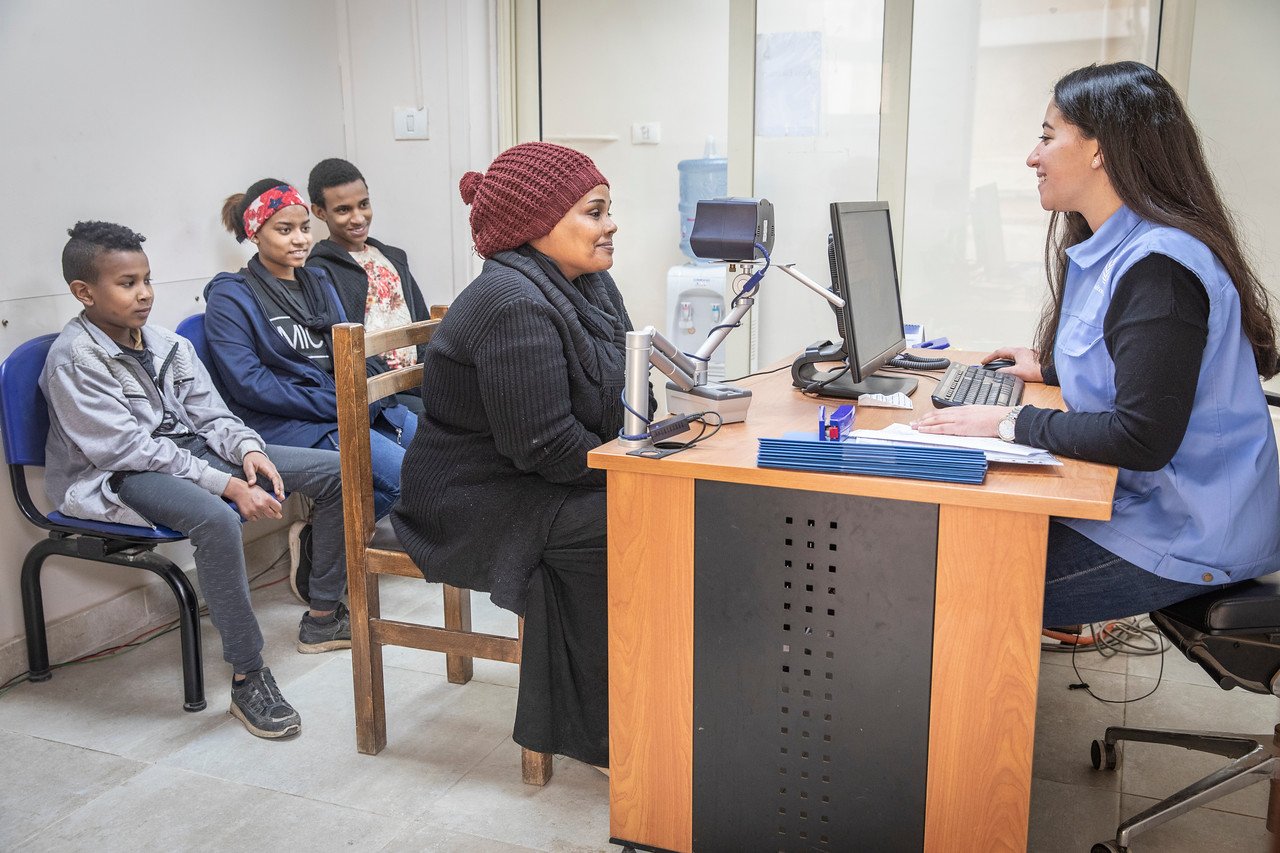International protection for asylum-seekers and refugees begins with admission to a country of asylum and registration and documentation by national authorities or UNHCR. Registration and identification of refugees is key for the people concerned, as well as for States to know who has arrived, and facilitates access to basic assistance and protection. It allows UNHCR to identify those individuals with protection risks or special needs, as well as those requiring assistance.
By providing a record of their status, registration helps protect refugees against Refoulement, arbitrary arrest, and detention. It is also a protection tool that assists to identify the most appropriate durable solutions to refugee problems.
In Egypt, the registration process has been delegated by the Government of Egypt to UNHCR based on the memorandum of understanding signed in 1954. Over the years, registration has evolved in keeping with the latest international advances, now including collection of biometric data such as iris scanning and finger printing.
In addition to facilitating access to services, registration allows refugees and asylum-seekers to regularize their stay in Egypt. Once registered, they can obtain a renewable residence permit which grants them freedom of movement across the country.

